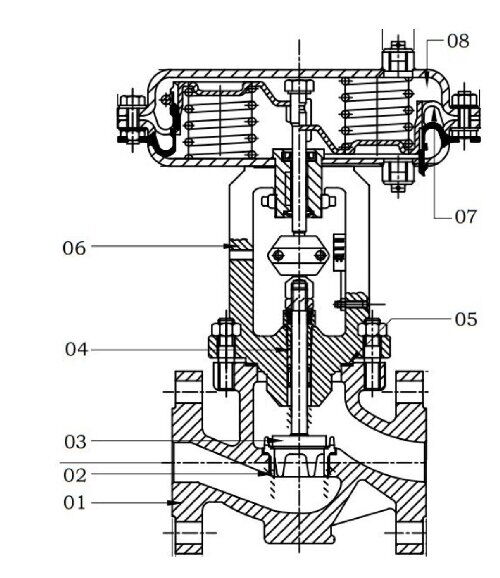How Small Opening Impact Control Valve Performance?
As the terminal control component in process industries facilitating automated production, control valves play a crucial role in ensuring the quality of automatic process control in factories. However, in practical operation, the lifespan and performance of control valves are often influenced by various factors, with small opening being a widely acknowledged concern. So, what exactly causes small opening to affect the lifespan and performance of control valves?
Effects of Small Opening on Control Valves
The effects of small opening on control valves mainly include erosion, pressure and velocity fluctuations, jump phenomena, and suitability issues with specific types of valves. Here's a detailed exploration of each major issue:
1. Erosion Phenomenon
Small opening result in excessively narrow clearances within the flow path of the control valve, leading to high fluid velocities that cause severe erosion on the valve core and seat. This erosion rapidly diminishes the smoothness of the valve components, intensifying wear and ultimately shortening the valve's lifespan.
2. Severe Pressure and Velocity Fluctuations
Small opening induce drastic pressure and velocity fluctuations that surpass the capacity of the control valve, resulting in intense vibrations and oscillations. This not only disrupts the normal operation of the control valve but also risks damaging other equipment within the system.
3. Jump Phenomena
Under small opening conditions, control valves may experience jump closures and jump starts, rendering the valve incapable of effective regulation within a certain range. Particularly when the valve opening is around 3%, the proximity of the valve core sealing surface to the throttling port increases the risk of surface damage, impairing the valve's normal functioning.
4. Suitability Issues with Specific Valve Types
Certain types of valves, such as butterfly valves and straight-through double-seated control valves in pneumatic diaphragm control valves, are not suitable for operating in environments with small opening. Under small opening conditions, these valves are prone to unstable operating states, leading to anomalies like opening or closing jumps, significantly compromising the stability and safety of process systems.
Mitigation Strategies
To effectively address the impact of small opening on control valves, here are some common mitigation strategies:
1. Reducing Differential Pressure
Lowering the pressure drop when fluid passes through the control valve can decrease the valve's flow rate, thereby mitigating the effects of small opening. This can be achieved by installing manual valves or throttling orifice plates before and after the control valve to consume some pressure drop and reduce pressure fluctuations.
2. Reducing Valve Diameter
Reducing the valve's diameter can decrease the flow rate, avoiding operation under small opening conditions. This can be achieved by replacing the valve with a smaller diameter one or by internal diameter reduction methods.
3. Optimizing Valve Design and Selection
Selecting appropriate valve types and design parameters according to different process requirements and operating environments. For instance, for environments with small opening conditions, specially designed valves or materials resistant to high pressure and wear can be chosen to enhance the valve's stability and durability.
By implementing measures such as reducing pressure differentials, decreasing valve diameter, and optimizing design, the impact of small opening on control valves can be effectively addressed, enhancing their stability and reliability. In the future, with the advancement of intelligent technology and materials science, the performance and functionality of control valves will further improve, providing more reliable support for the optimized operation of industrial automation systems.

